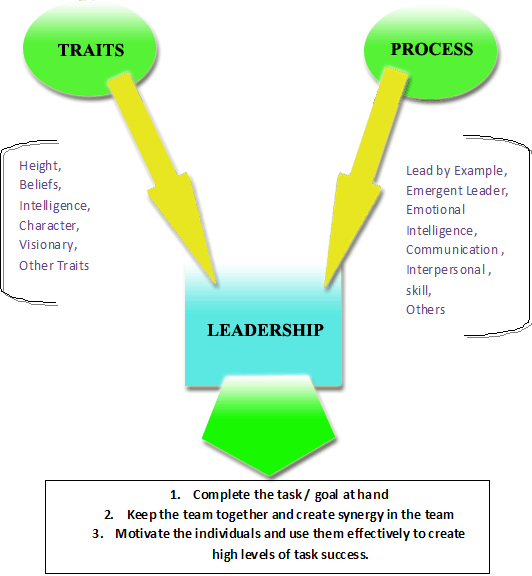Now that’s out of the way, let’s see what that really means.
It is about being forward looking, Inspirational to others, and orientated to achieve results, winning the hearts and minds of those followers to achieve objectives and corporate goals, as a team.
When you define Leadership, it is clear that Leaders and their teams are interdependent – They rely on each other for success.
The Leader has arguably three main tasks:
- To achieve their goal that they have set out to achieve
- To maintain effective relationships with their team members and to keep them together in order to achieve that task
- To satisfy the needs of individuals in that group in order to match them to the group task
– The net result: improved and honed Leadership Characteristics, which result in polished and developed Leadership Styles.

Whilst Leadership can be learned and the skills and attributes can be influenced by the Leader’s traits, knowledge and skills give the Leader the ability and directly influence the process of Leadership.
Management and Leadership
Leadership is the core of all Managerial and Supervisory activities. All those who are in Managerial positions have a Leadership function, and all those in Leadership roles have Managerial responsibilities. Typical roles may include:
- To give vision
- To energise and motivate
- To set and enforce behaviours and standards
- To see things through to their completion
- To utilise the team member’s skills and get the best out of them, filling capability gaps when needed.
Leadership differs to being the boss or Manager, in that it makes the followers want to achieve high goals (called Emergent Leadership), rather than simply bossing people around (Rowe, 2007).
To define Leadership means to understand that it is not enough for someone to just lead – They must Lead by example, focus on the task at hand, and be truly emotionally intelligent, to get the best out of their team, themselves and the task.
Often, you become assigned a Leadership position, but the best Leaders are good at getting unsurpassed results out of their team through inspirational leadership, which is learned over a career.
Other Related Articles:
Need Further Help?
Performance Coaching – Louise Yates delivers leadership and performance coaching to take your business to the next level
